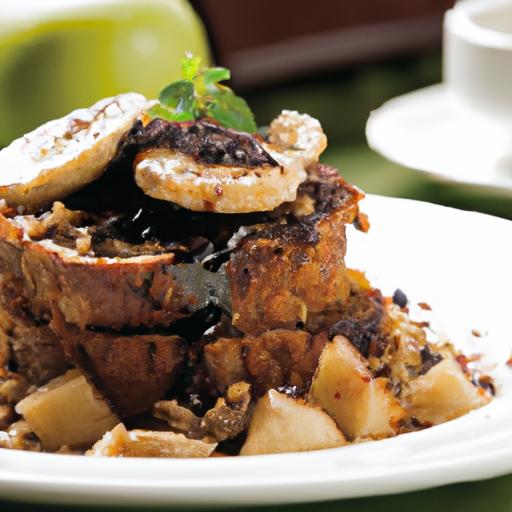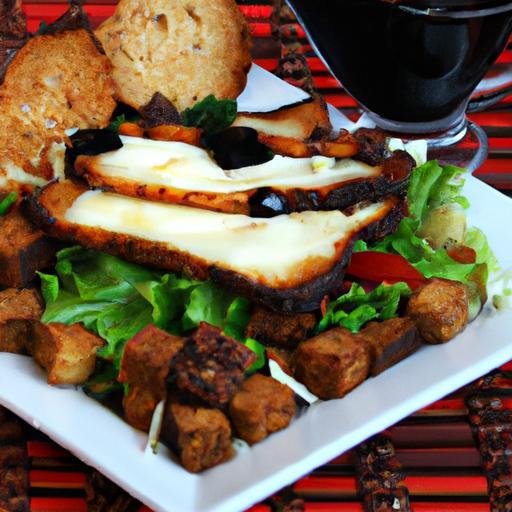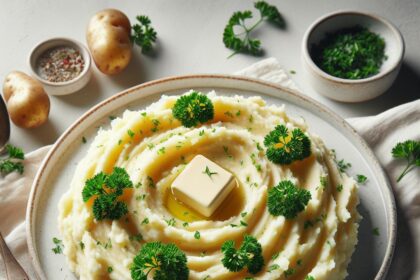There’s something magical about that first sip of freshly brewed coffee-the rich aroma, the bold flavor, the comforting warmth. But what happens when you’ve brewed too much, and a cup or two go untouched? Instead of tossing out that leftover coffee, why not transform it into something just as delightful, if not more? In this article, we’ll explore clever ways to reuse leftover coffee that will make you look forward to brewing even more. From inventive recipes to practical hacks, these smart ideas will show you how to stretch every drop, reduce waste, and unleash new flavors you never knew coffee could hold. Get ready to awaken your creativity and fall in love with brewing all over again!
Transform Leftover Coffee into Delightful Coffee Ice Cubes and Beyond
Clever Ways to Reuse Leftover Coffee You’ll Love Brewing open a door to exciting culinary creativity and sustainable kitchen practices. One of the most delightful ways to reinvent your leftover brew is by turning it into flavorful coffee ice cubes. These little gems not only keep your iced coffees robust without dilution but also lend a rich, aromatic boost to desserts and baked goods. Beyond the kitchen, leftover coffee finds a surprising new life as a natural plant fertilizer and deodorizer, making every drop count in your home.
Prep and Cook Time
- Preparation: 10 minutes
- Freezing: 4-6 hours
- Usage time: Varies depending on recipe or application
Yield
Approximately 24 coffee ice cubes (based on standard ice cube tray size)
Difficulty Level
Easy – Minimal kitchen effort with maximal impact
Ingredients
- 2 cups leftover brewed coffee (cooled to room temperature)
- Optional add-ins: 1 tsp vanilla extract, 2 tbsp sugar or honey (to sweeten), 1/2 tsp cinnamon for warmth
- For dessert enhancement: 1 tbsp espresso powder for adding depth, as needed
Instructions
- Cool Your Brew: Allow your leftover coffee to cool completely before freezing to avoid cloudiness and ice buildup.
- Flavor Infusion: Stir in any optional sweeteners or spices for a personalized touch-vanilla, cinnamon, and honey add warmth and aroma.
- Pour Into Tray: Carefully fill each compartment of a clean ice cube tray with coffee. Leave a small gap at the top to allow for expansion.
- Freeze Solid: Place the tray flat in the freezer for 4-6 hours, or until completely frozen.
- Enhance Desserts: Chop or crush coffee ice cubes as needed and fold into batters, frostings, or sprinkle over chilled desserts to infuse a rich coffee note.
- Repurpose for Gardening: Use any leftover liquid coffee by diluting it and mixing it into your plant’s soil as a fertilizer rich in nitrogen, or pour some into open containers to absorb odors naturally.
Tips for Success
- Use dark roast coffee for stronger, richer flavors ideal for desserts and beverages.
- Add a pinch of salt if your leftover coffee tastes slightly bitter-this balances flavors beautifully.
- For a creamy twist, freeze leftover coffee combined with milk or cream to create velvety coffee cubes perfect for iced lattes.
- Make extra batches and store cubes in a zip-lock bag to avoid freezer odors and extend shelf life up to two weeks.
- Before using coffee as a fertilizer, ensure it is free from additives like sugar or cream which may harm plants.
Serving Suggestions
Elevate your iced coffee presentations by gently stirring in coffee ice cubes with a splash of almond or oat milk and a dusting of cocoa powder or nutmeg on top. For desserts, coffee ice cubes work wonders crushed into chocolate mousse, layered in tiramisu, or blended into cake batters for a natural mocha kick. In the garden, mix leftover coffee with compost or directly sprinkle around acid-loving plants like azaleas and roses for an earthy, healthful boost. Use leftover coffee containers as eco-friendly odor absorbers in refrigerators or closets-refreshing your space while cutting waste.

| Nutrition (per cube) | Calories | Protein | Carbs | Fat |
|---|---|---|---|---|
| Coffee Ice Cube | 2 kcal | 0 g | 0.1 g | 0 g |
| Coffee Cube with Honey | 8 kcal | 0 g | 2 g | 0 g |
| Creamy Coffee Cube | 15 kcal | 0.2 g | 1.5 g | 1 g |
Explore even more creative coffee hacks in our Best Coffee Recipes Collection. For scientific insights on coffee’s fertilizing properties, visit NCBI Coffee as Fertilizer Study.
Q&A
Q: Can leftover coffee really be reused, or is it just better to brew fresh every time?
A: Absolutely, leftover coffee can be your new secret ingredient! While fresh brew is king for that perfect cup, leftover coffee holds untapped potential. With a bit of creativity, you can transform it into delicious drinks, flavorful recipes, and even unexpected household helpers-making every drop count.
Q: What’s a clever way to reuse leftover coffee in the kitchen?
A: Think beyond the cup! Pour leftover coffee into your pancake or brownie batter for a rich, deep flavor that intensifies the chocolate or adds a subtle mocha twist. It’s an easy upgrade that turns a simple recipe into an indulgent treat.
Q: Can leftover coffee be reused in beverages?
A: Definitely! Use it as an ice cube base for iced coffee to keep your drink chill without watering it down. Or blend it into smoothies for an energizing mocha boost. Even mix it with cream and sugar for a quick affogato-style pick-me-up.
Q: How can leftover coffee be reused outside of drinks and food?
A: Coffee grounds and leftover brew make excellent natural deodorants and cleaning agents. For example, leftover coffee can deodorize your fridge or be used as a gentle scrubbing liquid for pots and pans, helping tackle stains with a caffeinated punch.
Q: Is leftover coffee safe to keep and reuse later?
A: Yes-if stored properly. Keep it refrigerated in a sealed container and use within 24 hours to maintain flavor and safety. Avoid leaving it out at room temperature for extended periods, as it can develop off flavors or bacteria.
Q: Can leftover coffee help with gardening or plants?
A: Indeed! Use cooled leftover coffee as a mild fertilizer or soil booster for acid-loving plants like azaleas and roses. Its nutrients can help enrich your garden while reducing waste. Just dilute it so the acidity doesn’t overwhelm your green friends.
Q: What’s the most surprising reuse of leftover coffee you’d recommend?
A: Making coffee-infused cocktails or mocktails! Mix leftover coffee with your favorite spirits or sparkling waters, add a twist of citrus, and you have a sophisticated drink that’s as clever as it is delicious. It’s a fun way to reuse and impress guests simultaneously.
Q: How does reusing leftover coffee contribute to sustainability?
A: Reusing leftover coffee cuts down on waste and saves resources. Every repurposed sip means less brewed coffee discarded and less environmental impact. Plus, it sparks creativity, turning what might be trash into treasure-with flavor!
In Conclusion
As the last drop of your creative coffee journey brews into everyday brilliance, remember: leftover coffee isn’t just a forgotten relic of mornings past-it’s a secret ingredient waiting to be transformed. From flavor-packed ice cubes to garden-friendly fertilizer, these clever hacks don’t just reduce waste; they invite you to rethink your routine and savor every sip in surprising new ways. So next time you find a cup half-full, embrace the art of reuse, and let your leftover coffee inspire a world of bold, sustainable brewing possibilities. Here’s to brewing smarter and loving every drop!








